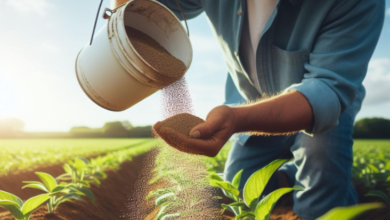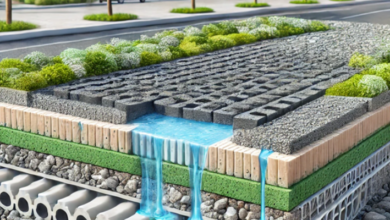Plaster Mold Making: A Classic Technique for Modern Craftsmanship

Introduction
Plaster mold making is a traditional technique that remains widely used in the modern world of sculpture, ceramics, and small-scale manufacturing. Known for its affordability, simplicity, and excellent detail reproduction, plaster molds are commonly used to cast a variety of materials including clay, wax, soap, and even some resins. Whether you’re a ceramic artist, industrial designer, or hobbyist, understanding the process and potential of plaster mold making can open up creative and practical opportunities.
What Is Plaster Mold Making?
Plaster mold making involves using a model (or “pattern”) to create a negative impression in plaster, which hardens into a mold. This mold can then be used to cast multiple replicas of the original design. Plaster of Paris is the most common material used due to its fine texture, fast setting time, and affordability. The method is especially favored for producing ceramic wares, sculptures, and prototyping objects.
Why Choose Plaster?
The appeal of plaster mold making lies in its versatility and efficiency. Here are some key advantages:
- High Detail Capture: Plaster reproduces surface details exceptionally well.
- Cost-Effective: Plaster is inexpensive and easily available.
- Non-Toxic and Safe: When handled properly, plaster is a safe material for both beginners and professionals.
- Reusable Molds: Depending on the application, plaster molds can be used multiple times.
- Environmentally Friendly: It is biodegradable and non-hazardous, unlike some synthetic mold materials.
For artists and engineers who need accuracy without investing in expensive mold systems, plaster provides a solid solution.
Key Materials Needed
To begin plaster mold making a few essential materials are required:
- Plaster of Paris
- Mixing container
- Water
- Mold box or mold frame
- The model/pattern to be molded
Additional tools such as spatulas, brushes, and sandpaper can help refine the process and result.
Step-by-Step Mold Making Process
1. Prepare the Model
Start with a clean, dry master model. If the surface is porous or detailed, apply a mold release agent. This prevents the plaster from sticking and helps preserve surface detail.
2. Build the Mold Frame
The box should leave about 1 to 2 inches of space around the model on all sides.
See also: Understanding the Key Strategies of Writing a Small Business Plan
3. Mix the Plaster
In a clean container, add plaster to water in a ratio of about 2 parts plaster to 1 part water. Stir gently to avoid creating air bubbles. Let the mixture sit for a minute or two to allow full saturation.
4. Pour the Plaster
Slowly pour the plaster into the mold box, starting at the lowest point of the model to reduce trapped air. Tap the mold box lightly to help bubbles rise to the surface.
Types of Plaster Molds
Depending on the complexity of the object, different types of plaster molds can be used:
- One-Part Molds: Suitable for flat-backed or low-relief designs.
- Two-Part Molds: Ideal for three-dimensional models with undercuts or rounded surfaces.
- Multi-Part Molds: Used for intricate objects that require more detailed separation lines.
Each type of mold has specific advantages and should be chosen based on the object’s shape and purpose.
Common Uses
Plaster mold making is found in various industries and disciplines:
- Ceramics: Liquid clay (slip) is poured into the mold, and as the plaster absorbs the moisture, it forms a ceramic shell.
- Sculpture: Artists use plaster molds to reproduce original works or to cast wax for bronze casting.
- Soap and Candle Making: Molds made from plaster help shape soaps and candles with artistic detail.
- Industrial Prototyping: Engineers create plaster molds for testing part designs before final manufacturing.
- Education: Art schools and workshops often use plaster mold making to teach foundational skills.
Its accessibility and adaptability make it a go-to choice for countless practical applications.
Tips for Better Results
To master the art of plaster mold making, keep these best practices in mind:
- Use Fresh Plaster: Old plaster can set improperly or produce weak molds.
- Avoid Overmixing: Stir gently to minimize air bubbles.
- Work in a Clean Area: Dust or debris can interfere with mold quality.
- Seal Porous Models: Seal wood, clay, or other porous models to prevent distortion or sticking.
Taking time to prepare your materials and workspace can significantly improve your final results.
Maintenance and Storage
Proper care of plaster molds ensures longevity and usability:
- Clean Immediately After Use: Rinse the mold with water before the residue sets.
- Dry Thoroughly: Store molds in a dry, ventilated area to avoid mold or mildew.
- Limit Resin Use: Only certain resins are safe for plaster molds; others may cause breakage or heat damage.
Though not as durable as silicone molds, well-maintained plaster molds can be used repeatedly for low-heat materials.
Environmental and Safety Aspects
Plaster is generally safe, but some precautions are essential:
- Protect Your Skin: Use gloves to prevent irritation during mixing and handling.
- Never Pour Down the Drain: Plaster can harden in pipes and cause severe clogs. Always dispose of it in solid form.
Conclusion
With its simple tools and low costs, it offers a great entry point for beginners and continues to serve as a reliable method for professionals.
From ceramicists creating unique pottery to designers prototyping new products, plaster mold making enables detailed reproduction and creative exploration. With care and practice, this classic technique becomes a powerful tool in any creator’s arsenal—proving that even in the age of digital innovation, traditional methods still have a lasting impact.




